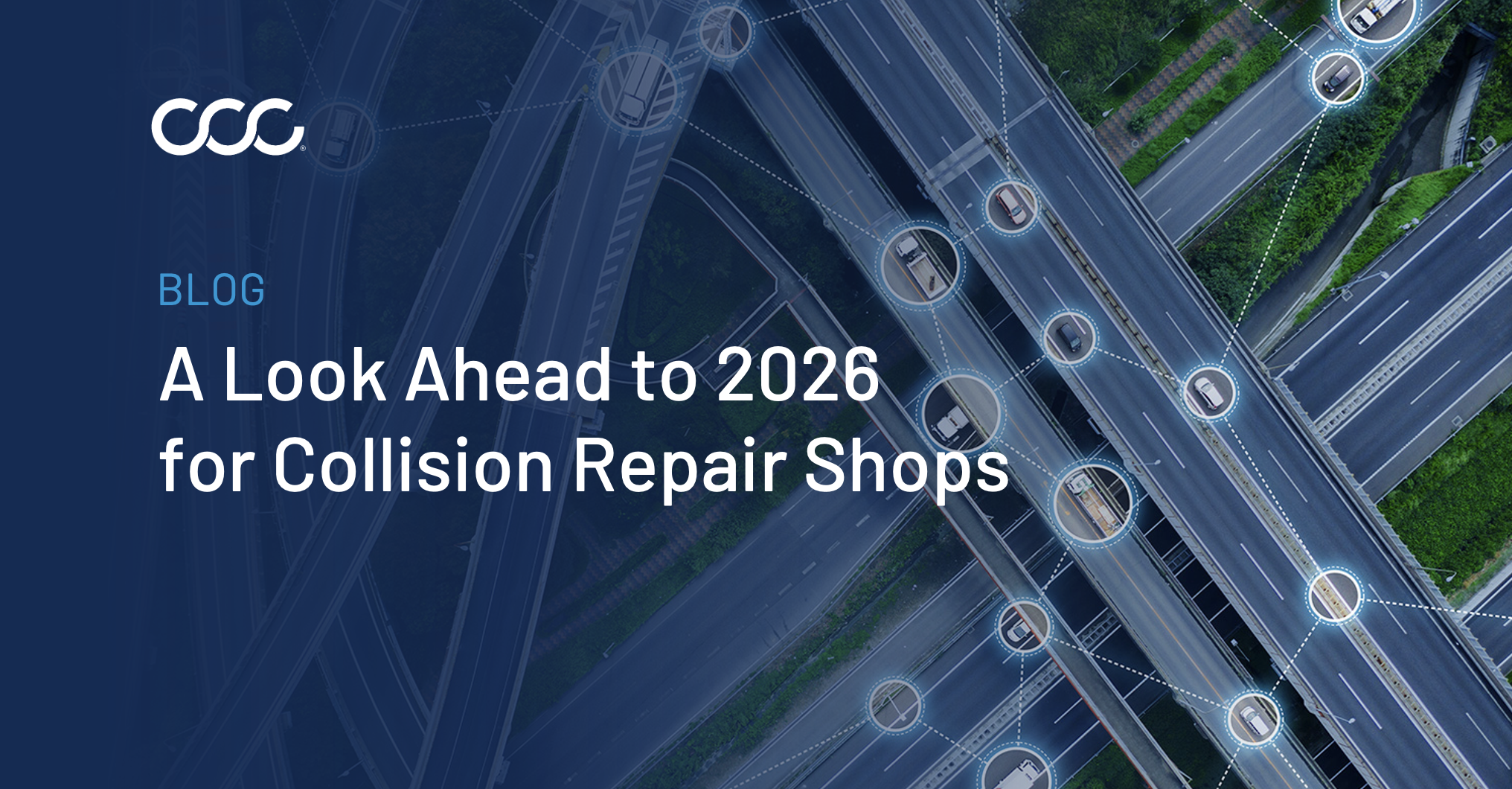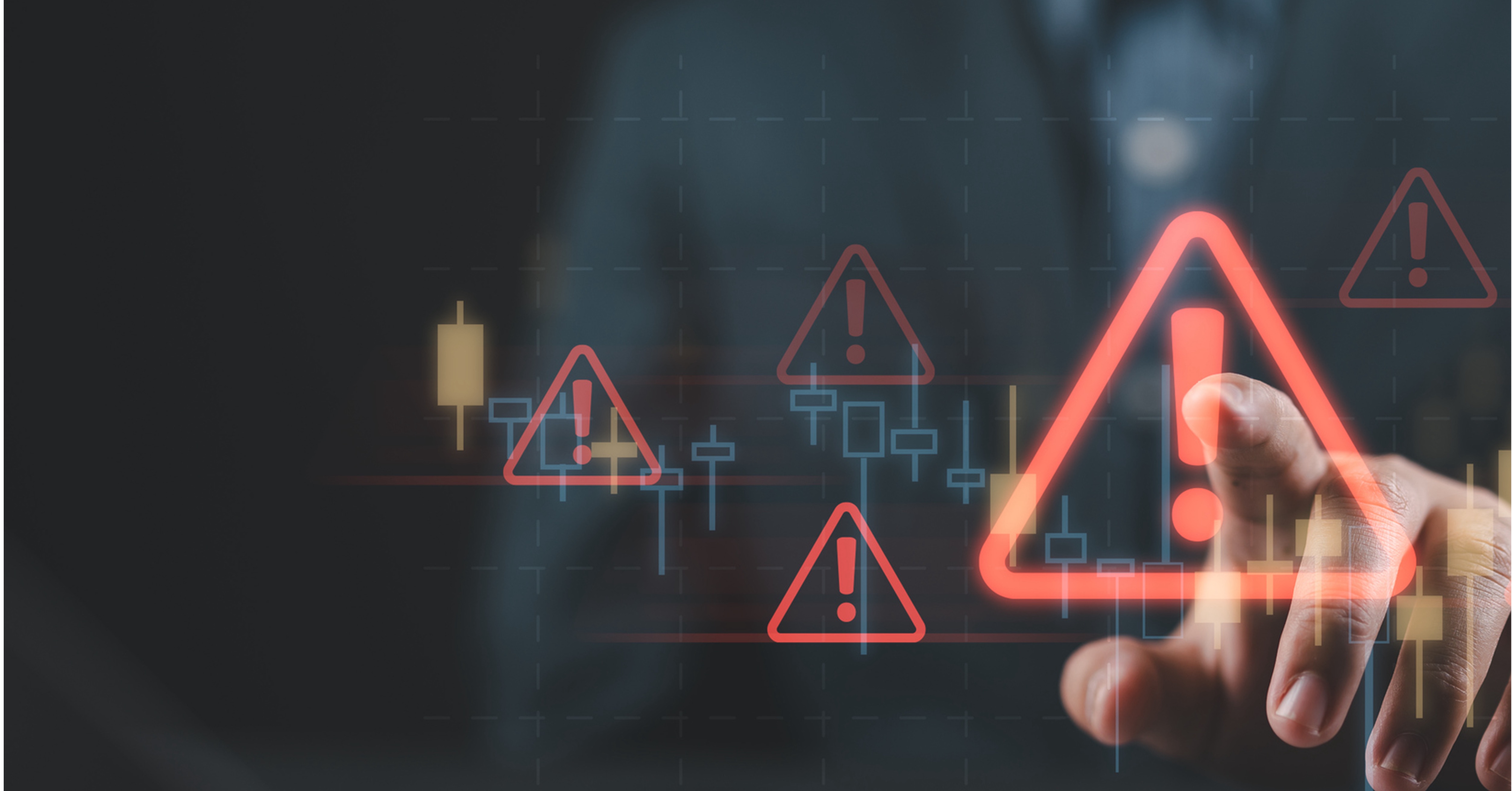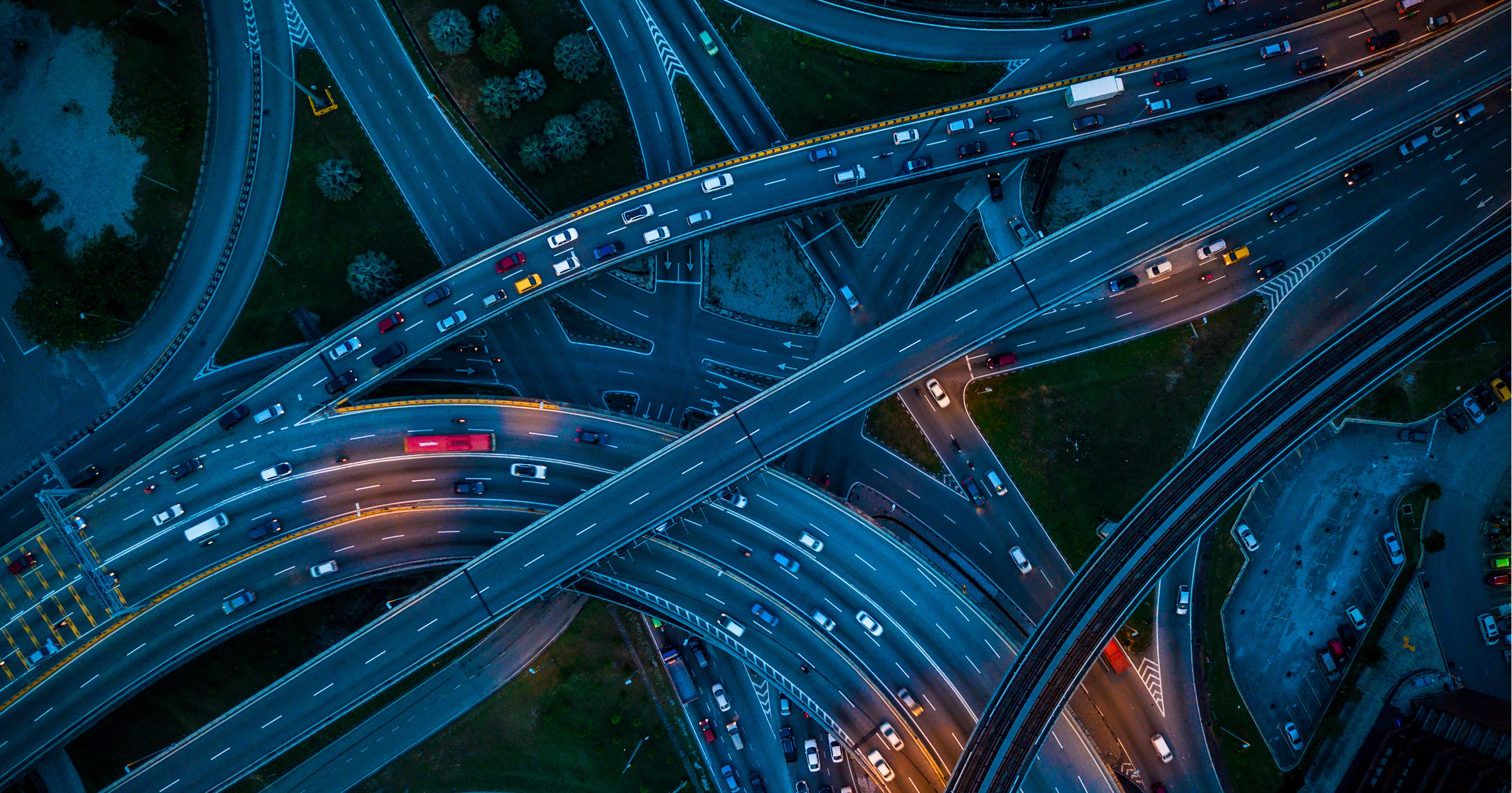Click here to receive monthly CCC Trends reports and other insights
The recent uptick in electric vehicle adoption and subsidization has elevated the conversation around car complexity and advanced driver assistance systems (ADAS) technology, but there are more than 60 million ICE vehicles in America that also tout ADAS safety and technology features designed for both protection and convenience.
As car complexity increases across the board, so too do the costs associated with repairing them –– and not just the monetary costs, but also the amount of time spent working (and waiting) on repairs and claims. According to CCC data, the cumulative annual cycle time for auto claims in the U.S. increased to more than 2 billion days in 2022, which begs the question: what is vehicle complexity really costing us?
Let’s break it down.
Vehicle Complexity Costs Vehicle Owners Time and Money
In 2022, EVs required two full weeks of additional cycle time and nearly eight more days between the last estimate being sent and the vehicle going into the shop to begin repairs. And, once the EV was in the shop, it required an average of 5.8 more days to complete the repairs. (Figure 1)

For repairs completed on vehicles originally appraised in Q1 2023, EVs are taking more than five additional days to get into shops for repair and an additional four days for repairs to be completed. So far in 2023, total cycle time for vehicles appraised in Q1 is down 10 days for EVs and down 6 days for non-EVs compared to 2022. (Figure 2) This is in part a reflection of the decrease in the volume of non-drivable vehicles being repaired, which can increase shop capacity and productivity.

Labor hours per repair day for DRP-repaired EVs averaged 1.8 in 2022, and in Q1 2023, averaged 2.1 labor hours per EV repair. Non-EVs averaged 2 labor hours per repair day in 2022 and were up slightly to 2.1 labor hours per repair day for Q1 2023.
And vehicle owners aren’t just paying for complex cars with their time, they’re also paying with their dollars in higher insurance premiums. Nearly one-third (31%) of U.S. auto insurance customers said they experienced a rate increase during the past year. According to Bankrate's 2023 Annual Report, auto insurance increased 14% from $1,771 for a full coverage policy to $2,014, which means that, based on an average annual salary of $68,852, Americans are spending roughly 3% of their income on car insurance.
Vehicle Complexity Costs Collision Shops Money and More Money
Most ADAS technology was designed to avoid accidents altogether at lower speeds, but as we’ve previously reported, poor driving habits like speeding and distracted driving have continued post-pandemic, and ADAS can only mitigate speed before impact. When an accident does occur with an ADAS-equipped vehicle, there’s more damage to electronic content and part components, fueling higher repair costs.
According to CCC’s collision and liability data, the total cost of repair (TCOR) for vehicles manufactured in 2021 with autonomous emergency braking (AEB) and Level 2 ADAS technology ranged from 15% to 19% higher than vehicles manufactured in 2015 that weren’t equipped with these technologies. Insurers factor in these additional costs when calculating premiums, resulting in higher rates.
Growth in vehicle complexity is also driving the need for collision repairers to make more significant financial investments in tooling, training, and, of course, labor. Thus far in 2023, 47.4% of non-comprehensive claims include mechanical labor, which now has an average hourly rate of $115.15 (+8.6% vs. 2022). (Figures 3 and 4) And as shops incur higher costs to attract, train, and retain talent, we might expect to see continued increases in labor rates within this highly competitive market.


Additionally, repairing complex vehicles now requires even more specialized skillsets to support tasks like replacing complex parts, reviewing diagnostic trouble codes (DTC), and performing scans and calibrations, which continue to steadily increase. (Figure 5)
In Q1 of 2023, almost 60% of all repairable appraisals included a scan procedure, an almost 8-point increase year-over-year. Over 70% of current year or newer vehicles included a scan, which is the first time we’ve seen this metric crack the 70% mark. Also in Q1 2023, 13.6% of appraisals included fees for calibration operations, which is almost five points higher year-over-year. 27.7% of current year or newer vehicles and 24.1% of vehicles 1-3 years old included a calibration operation. (Figure 6)
With complexity comes cost. Average costs for these operations continue to steadily increase. In comparing first quarters, the average scan is +$11.40 and calibration is +$48.00 in 2023. In cases where repair shops cannot complete calibrations, those operations are sub-contracted out to dealerships or other vendors ("sublet,") which can result in increased cost and cycle time for the repair process.


The average estimate for a drivable, front end, repairable claim in 2022 was $3,706, up 15.3% versus 2021 ($3,213) and up 39.4% compared to 2019 ($2,748). Vehicles over 7 years old average over $1,000 less to repair drivable, front-end collisions than their newer counterparts, much of this can be attributed to the location of ADAS sensors, labor costs, and replacement parts costs, making a "simple" bumper job a thing of the past.
Vehicle Complexity Costs Carriers Money, Time… and their Customers
Time and money spent repairing complex ADAS-equipped vehicles isn’t just a pain point for policyholders and collision shops –– it’s yet another new challenge for claims organizations to contend with. While complex safety features may be saving carriers money in terms of reduced number of claims, the data suggests that insurers are more than making up for those costs in increased claims severity, the amount of time spent managing claims, and policyholder attrition.
Auto insurers lost an average of 12 cents on every dollar of premium they collected in 2022 –– the worst performance in more than 20 years. This is in part due to the higher cost of repairs and replacements for more complex vehicles, which can lead to increased frequency of insurance claims, affecting insurers' claim payouts and overall costs.
Drivers who disable ADAS features are also driving up costs. some believe it creates a false sense of security for drivers, leading them to take risks they otherwise wouldn't, resulting in more accidents. A study commissioned by CCC found that more than 65% of ADAS-equipped vehicle drivers say they can disable the features, and more than 70% of them have, citing a belief that the features were not working properly (41%), the noises/lights were distracting (41%), or the technology simply wasn’t necessary (30%). (Figures 7 and 8)


Despite some skepticism, regulation continues to drive automakers to incorporate ADAS safety features, and claims organizations are paying the price in time spent managing increasingly complex claims.
The additional time and resources needed to resolve complicated claims – coupled with rising claims volumes, which have returned to near-pre-pandemic levels – has translated to slower claims processing and subsequent declines in customer satisfaction. According to the J.D. Power 2023 U.S. Auto Insurance Study, satisfaction with auto insurance has dropped 12 points year over year, the largest decline in the past 20 years.
Can Technology Give Us Time, Money (and Consumers) Back?
The next phase of digital transformation for the claims and collision repair industries is dependent on how they address vehicle complexity and other ecosystem challenges, like labor shortages, evolving ADAS regulations, and consumer demand.
As such, claims organizations and repair shops have turned to AI technology-enabled solutions as industry professionals explore new ways to provide better, more intelligent experiences, starting with automating highly repetitive, low-skill tasks, which frees up their time to work on more important ones. This can translate to an actual cost savings benefit for insurers, as it helps improve customer satisfaction and retention.
Cost savings can also be achieved through better data-driven analysis. Insurers can streamline claims and improve pricing segmentation while offering more customized coverage options – a win for policyholders, as well.
And finally, repair shops that invest in better training, tooling, and technology that supports parts procurement and seamless connections to third-party vendors and partners may be best positioned to save time, money, and customers amid the new vehicle technology revolution.
Click here to receive monthly CCC Trends reports and other insights
Click here to receive monthly CCC Trends reports and other insights
The recent uptick in electric vehicle adoption and subsidization has elevated the conversation around car complexity and advanced driver assistance systems (ADAS) technology, but there are more than 60 million ICE vehicles in America that also tout ADAS safety and technology features designed for both protection and convenience.
As car complexity increases across the board, so too do the costs associated with repairing them –– and not just the monetary costs, but also the amount of time spent working (and waiting) on repairs and claims. According to CCC data, the cumulative annual cycle time for auto claims in the U.S. increased to more than 2 billion days in 2022, which begs the question: what is vehicle complexity really costing us?
Let’s break it down.
Vehicle Complexity Costs Vehicle Owners Time and Money
In 2022, EVs required two full weeks of additional cycle time and nearly eight more days between the last estimate being sent and the vehicle going into the shop to begin repairs. And, once the EV was in the shop, it required an average of 5.8 more days to complete the repairs. (Figure 1)

For repairs completed on vehicles originally appraised in Q1 2023, EVs are taking more than five additional days to get into shops for repair and an additional four days for repairs to be completed. So far in 2023, total cycle time for vehicles appraised in Q1 is down 10 days for EVs and down 6 days for non-EVs compared to 2022. (Figure 2) This is in part a reflection of the decrease in the volume of non-drivable vehicles being repaired, which can increase shop capacity and productivity.

Labor hours per repair day for DRP-repaired EVs averaged 1.8 in 2022, and in Q1 2023, averaged 2.1 labor hours per EV repair. Non-EVs averaged 2 labor hours per repair day in 2022 and were up slightly to 2.1 labor hours per repair day for Q1 2023.
And vehicle owners aren’t just paying for complex cars with their time, they’re also paying with their dollars in higher insurance premiums. Nearly one-third (31%) of U.S. auto insurance customers said they experienced a rate increase during the past year. According to Bankrate's 2023 Annual Report, auto insurance increased 14% from $1,771 for a full coverage policy to $2,014, which means that, based on an average annual salary of $68,852, Americans are spending roughly 3% of their income on car insurance.
Vehicle Complexity Costs Collision Shops Money and More Money
Most ADAS technology was designed to avoid accidents altogether at lower speeds, but as we’ve previously reported, poor driving habits like speeding and distracted driving have continued post-pandemic, and ADAS can only mitigate speed before impact. When an accident does occur with an ADAS-equipped vehicle, there’s more damage to electronic content and part components, fueling higher repair costs.
According to CCC’s collision and liability data, the total cost of repair (TCOR) for vehicles manufactured in 2021 with autonomous emergency braking (AEB) and Level 2 ADAS technology ranged from 15% to 19% higher than vehicles manufactured in 2015 that weren’t equipped with these technologies. Insurers factor in these additional costs when calculating premiums, resulting in higher rates.
Growth in vehicle complexity is also driving the need for collision repairers to make more significant financial investments in tooling, training, and, of course, labor. Thus far in 2023, 47.4% of non-comprehensive claims include mechanical labor, which now has an average hourly rate of $115.15 (+8.6% vs. 2022). (Figures 3 and 4) And as shops incur higher costs to attract, train, and retain talent, we might expect to see continued increases in labor rates within this highly competitive market.


Additionally, repairing complex vehicles now requires even more specialized skillsets to support tasks like replacing complex parts, reviewing diagnostic trouble codes (DTC), and performing scans and calibrations, which continue to steadily increase. (Figure 5)
In Q1 of 2023, almost 60% of all repairable appraisals included a scan procedure, an almost 8-point increase year-over-year. Over 70% of current year or newer vehicles included a scan, which is the first time we’ve seen this metric crack the 70% mark. Also in Q1 2023, 13.6% of appraisals included fees for calibration operations, which is almost five points higher year-over-year. 27.7% of current year or newer vehicles and 24.1% of vehicles 1-3 years old included a calibration operation. (Figure 6)
With complexity comes cost. Average costs for these operations continue to steadily increase. In comparing first quarters, the average scan is +$11.40 and calibration is +$48.00 in 2023. In cases where repair shops cannot complete calibrations, those operations are sub-contracted out to dealerships or other vendors ("sublet,") which can result in increased cost and cycle time for the repair process.


The average estimate for a drivable, front end, repairable claim in 2022 was $3,706, up 15.3% versus 2021 ($3,213) and up 39.4% compared to 2019 ($2,748). Vehicles over 7 years old average over $1,000 less to repair drivable, front-end collisions than their newer counterparts, much of this can be attributed to the location of ADAS sensors, labor costs, and replacement parts costs, making a "simple" bumper job a thing of the past.
Vehicle Complexity Costs Carriers Money, Time… and their Customers
Time and money spent repairing complex ADAS-equipped vehicles isn’t just a pain point for policyholders and collision shops –– it’s yet another new challenge for claims organizations to contend with. While complex safety features may be saving carriers money in terms of reduced number of claims, the data suggests that insurers are more than making up for those costs in increased claims severity, the amount of time spent managing claims, and policyholder attrition.
Auto insurers lost an average of 12 cents on every dollar of premium they collected in 2022 –– the worst performance in more than 20 years. This is in part due to the higher cost of repairs and replacements for more complex vehicles, which can lead to increased frequency of insurance claims, affecting insurers' claim payouts and overall costs.
Drivers who disable ADAS features are also driving up costs. some believe it creates a false sense of security for drivers, leading them to take risks they otherwise wouldn't, resulting in more accidents. A study commissioned by CCC found that more than 65% of ADAS-equipped vehicle drivers say they can disable the features, and more than 70% of them have, citing a belief that the features were not working properly (41%), the noises/lights were distracting (41%), or the technology simply wasn’t necessary (30%). (Figures 7 and 8)


Despite some skepticism, regulation continues to drive automakers to incorporate ADAS safety features, and claims organizations are paying the price in time spent managing increasingly complex claims.
The additional time and resources needed to resolve complicated claims – coupled with rising claims volumes, which have returned to near-pre-pandemic levels – has translated to slower claims processing and subsequent declines in customer satisfaction. According to the J.D. Power 2023 U.S. Auto Insurance Study, satisfaction with auto insurance has dropped 12 points year over year, the largest decline in the past 20 years.
Can Technology Give Us Time, Money (and Consumers) Back?
The next phase of digital transformation for the claims and collision repair industries is dependent on how they address vehicle complexity and other ecosystem challenges, like labor shortages, evolving ADAS regulations, and consumer demand.
As such, claims organizations and repair shops have turned to AI technology-enabled solutions as industry professionals explore new ways to provide better, more intelligent experiences, starting with automating highly repetitive, low-skill tasks, which frees up their time to work on more important ones. This can translate to an actual cost savings benefit for insurers, as it helps improve customer satisfaction and retention.
Cost savings can also be achieved through better data-driven analysis. Insurers can streamline claims and improve pricing segmentation while offering more customized coverage options – a win for policyholders, as well.
And finally, repair shops that invest in better training, tooling, and technology that supports parts procurement and seamless connections to third-party vendors and partners may be best positioned to save time, money, and customers amid the new vehicle technology revolution.







